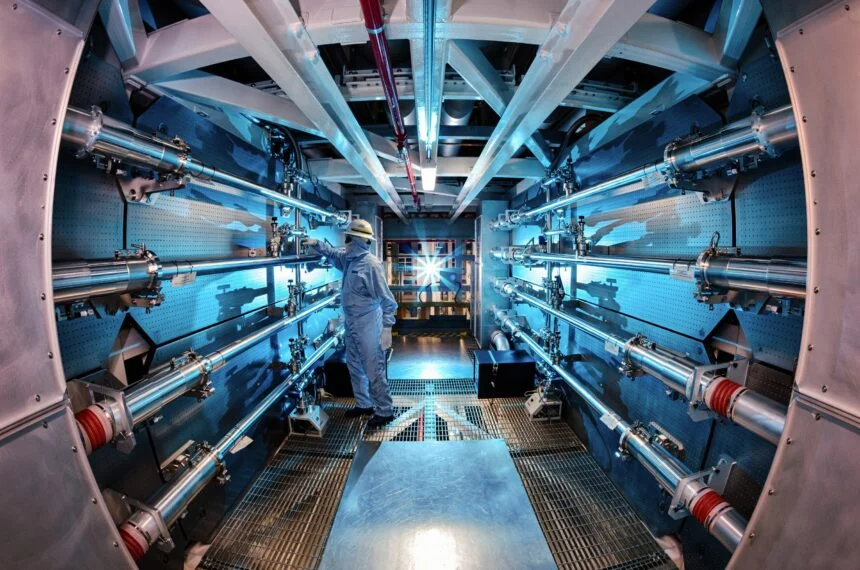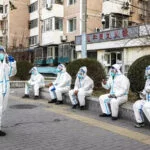After more than fifty years of study into nuclear fusion, US researchers confirm a significant development in nuclear fusion that might open the way for an abundance of clean energy in the future.
It was announced by scientists at the US National Ignition Facility in California that fusion research had achieved a historic feat known as ignition or energy gain, in which more energy was released than was brought in by the facility’s massive, high-powered lasers.
Scientists lauded the development as proof that the power of the stars may be harnessed on Earth, despite the fact that the technology is still far from being ready to be turned into practical power plants and is not about to solve the climate crisis.
It is said that nuclear fusion is the “holy grail” of energy generation. The Sun and other stars are propelled by it which functions by fusing two pairs of light atoms; this “fusion” generates a lot of energy.
It is the reverse of nuclear fission, which involves the splitting apart of heavy atoms. The method now utilised in nuclear power plants is fission, however, the procedure also generates a lot of waste that emits radiation for a very long time. It needs to be stored safely because it can be harmful.
According to Dr. Arati Prabhakar, policy director of the White House Office of Science and Technology, “Last week, they shot a bunch of lasers at a pellet of fuel and more energy was released from that fusion ignition than the energy of the lasers going in.”This is such a tremendous example of what perseverance really can achieve.”
Way more energy is produced via nuclear fusion, and only trace amounts of radioactive waste are left behind. Additionally, and more significantly, the process doesn’t emit any greenhouse gases, preventing it from causing climate change. However, one of the difficulties is that in order to force and maintain the atoms together in fusion, extremely high temperatures and pressures are needed. No experiment has yet been able to generate more energy than was required to make it operate.
Jill Hruby of the National Nuclear Security Administration claimed the US has “taken the first tentative step towards a clean energy source that could revolutionise the globe” in her remarks during the unveiling on Tuesday.
A huge structure called the National Ignition Facility is located at the Lawrence Livermore National Laboratory not far from San Jose. Its purpose is to conduct experiments that temporarily and in scale model the nuclear bomb’s internal workings. By doing this, the US is able to maintain its nuclear weapons without having to conduct nuclear tests.
The Experiment
However, the experiments also serve as a first step toward clean fusion power. The hohlraum, a centimeter-long gold cylinder used by the researchers, is bombarded with up to 192 massive laser beams to produce the reactions. A peppercorn-sized fuel pellet within the container is bathed in x-rays as the powerful energy heats the container to more than 3m C, a temperature hotter than the surface of the sun.
The pellet’s surface is stripped off by the X-rays, which also cause a rocket-like implosion, raising the temperature and pressure to levels that are only experienced during nuclear explosions, star explosions, and large planets. Deuterium and tritium fuse as a result of the implosion, which travels at 400 km/s.
According to Einstein’s formula E=mc2, each pair of hydrogen nuclei that fuses together creates a lighter helium nucleus and a blast of energy. Seawater makes it simple to extract deuterium, whereas the Earth’s crust contains lithium, which can be used to produce tritium.
In the most recent experiment, scientists put 2.05 MJ of laser energy in and got 3.15 MJ out, a gain of almost 50%, indicating that fusion processes within the pellet were fueling additional fusion reactions. According to Dr. Marvin Adams of the National Nuclear Security Administration, “the energy production took less time than it takes light to travel one inch.”
The search for fusion power plants still faces formidable obstacles. The figure does not account for the 300–400 MJ required to initially power up the lasers, even if the pellet produced more energy than the lasers consumed. While a power plant would need to heat targets 10 times per second, the NIF lasers only fire roughly once every day. The price of the targets is another factor. The ones used in the US trial cost tens of thousands of dollars, but they would need to cost pennies for a practical power plant. How to release the energy as heat presents another challenge.
This experiment demonstrates that science is valid. It needs to be replicated, polished, and the quantity of energy it produces will need to be greatly increased before scientists can even consider scaling it up.
The expense of this endeavor has been in the billions of dollars; fusion is expensive. But overcoming these obstacles will undoubtedly be greatly aided by the prospect of a clean energy source.












